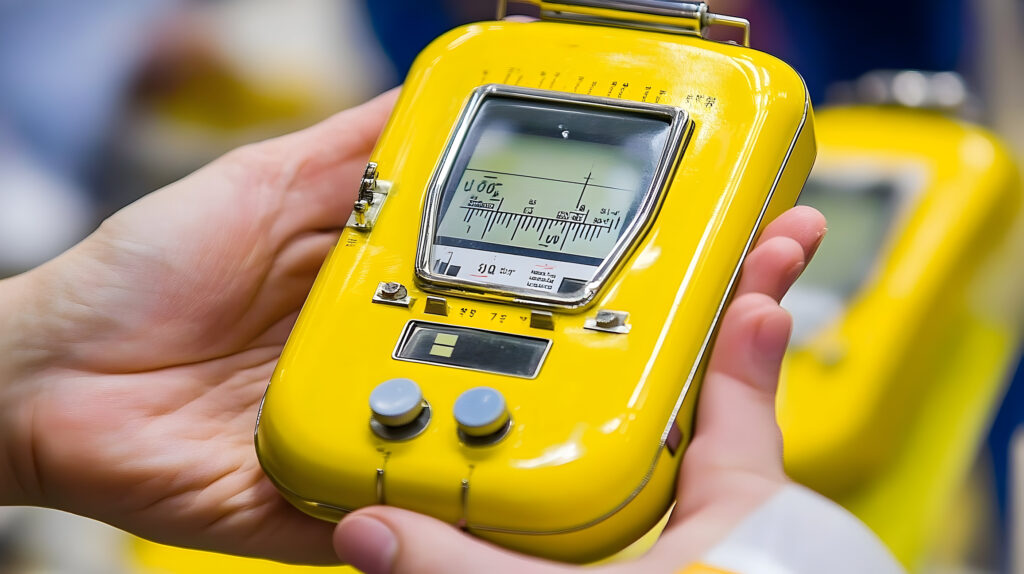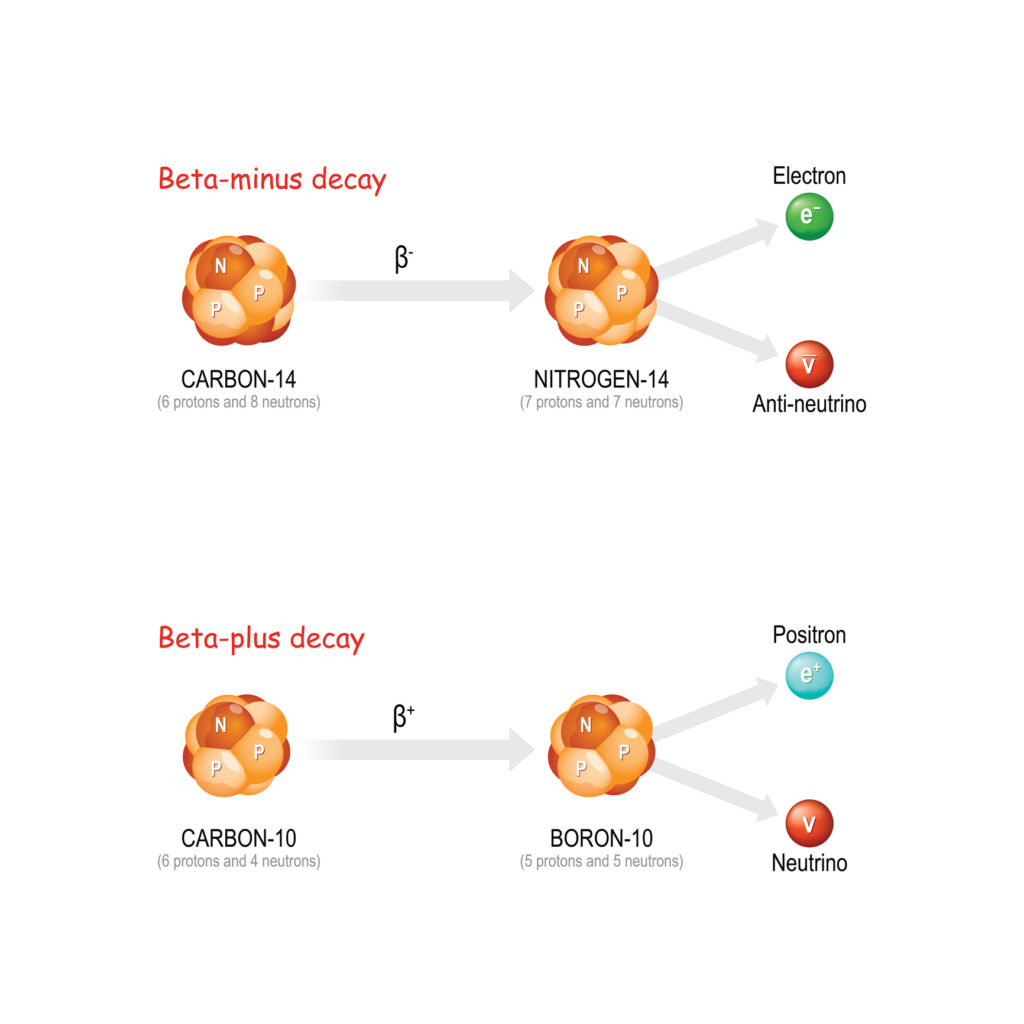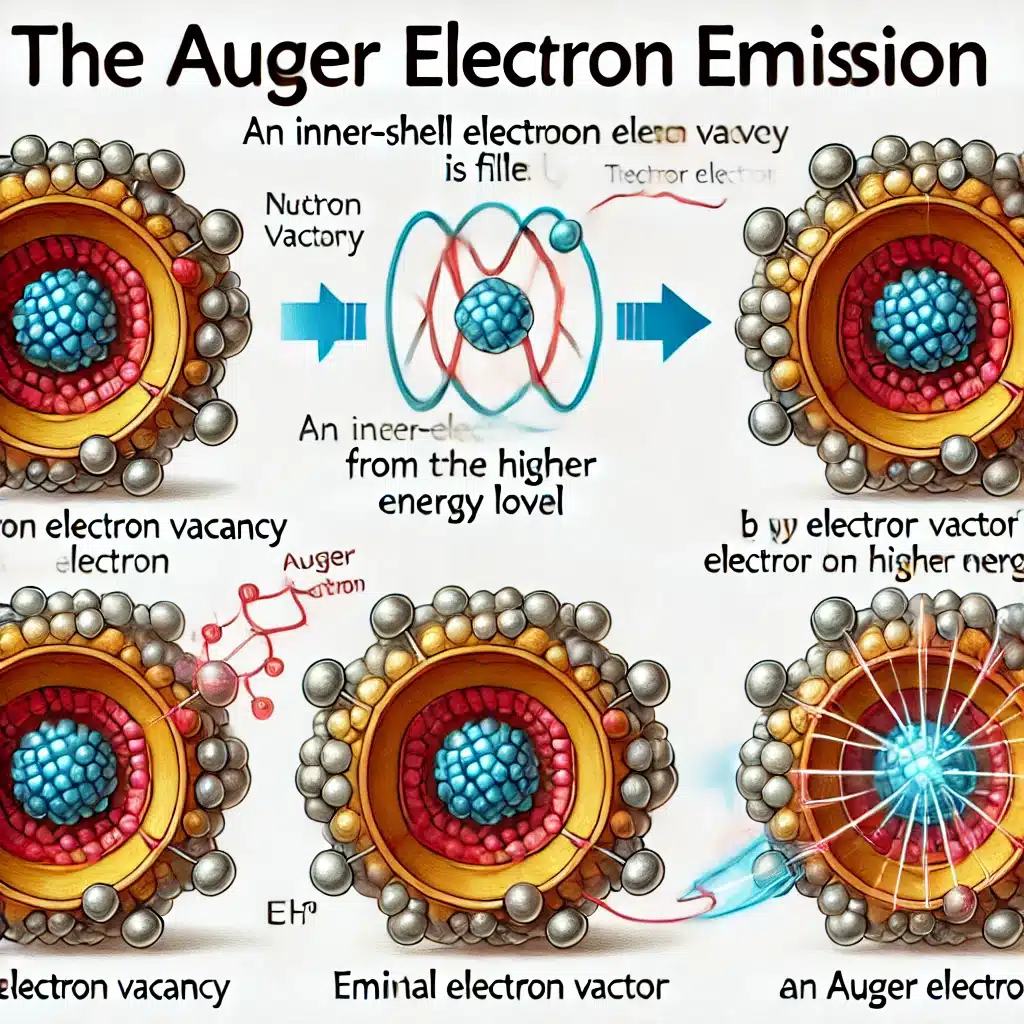The electromagnetic spectrum represents the range of all types of electromagnetic radiation. From radio waves to gamma rays, this spectrum is essential to understanding how various forms of energy propagate and interact with matter. This blog article examines the nature of the electromagnetic spectrum, covering its discovery, the characteristics of different regions within the spectrum, and the practical applications of each type of electromagnetic wave. Additionally, this article will discuss the importance of the spectrum in science and technology, its role in communication, and its implications for health and safety.
Introduction to the Electromagnetic Spectrum
The electromagnetic spectrum is a fundamental concept in physics, encompassing all wavelengths of electromagnetic radiation. These waves travel through space at the speed of light and consist of oscillating electric and magnetic fields. The spectrum is divided into regions based on wavelength and frequency, each with distinct properties and uses. Understanding the electromagnetic spectrum is crucial in fields ranging from astronomy and communication to medicine and environmental science.
The table below summarises the key regions of the electromagnetic spectrum along with their wavelengths, frequencies, and common applications:
| Region | Wavelength Range | Frequency Range | Common Applications |
| Radio Waves | > 1 mm to thousands of km | < 300 GHz to 3 Hz | AM/FM radio, television broadcasting, mobile phones, radar |
| Microwaves | 1 mm to 1 m | 300 GHz to 300 MHz | Microwave ovens, satellite communications, Wi-Fi, radar |
| Infrared | 700 nm to 1 mm | 430 THz to 300 GHz | Remote controls, thermal imaging, night-vision devices |
| Visible Light | 400 nm to 700 nm | 750 THz to 430 THz | Vision, photography, illumination, fibre-optic communications |
| Ultraviolet | 10 nm to 400 nm | 30 PHz to 750 THz | Sterilisation, tanning, fluorescent lighting, astronomy |
| X-Rays | 0.01 nm to 10 nm | 30 EHz to 30 PHz | Medical imaging (X-rays), security scanning, material inspection |
| Gamma Rays | < 0.01 nm | > 30 EHz | Cancer treatment (radiotherapy), sterilisation, nuclear research |
Historical Background and Discovery
The concept of electromagnetic radiation has evolved significantly over the centuries. The study of light dates back to ancient civilisations, but the modern understanding of the electromagnetic spectrum began in the 19th century.
James Clerk Maxwell, a Scottish physicist, was instrumental in developing the theory of electromagnetism. His equations, known as Maxwell’s equations, mathematically describe how electric and magnetic fields propagate and interact. These equations predicted the existence of electromagnetic waves, and Heinrich Hertz later confirmed this through experiments, demonstrating that radio waves behaved like light, thereby proving the existence of electromagnetic waves beyond the visible spectrum.
Maxwell’s work laid the groundwork for understanding the broader electromagnetic spectrum, revealing that visible light is just a small part of a much larger range of wavelengths.
Regions of the Electromagnetic Spectrum
The electromagnetic spectrum is typically divided into seven main regions: radio waves, microwaves, infrared radiation, visible light, ultraviolet radiation, X-rays, and gamma rays. Each region is characterised by its wavelength and frequency, which influence its energy and interaction with matter.
Radio Waves
Radio waves have the longest wavelengths in the electromagnetic spectrum, ranging from about one millimetre to thousands of kilometres. They are commonly used in communication technologies, such as radio and television broadcasting, mobile phones, and satellite communications.
Radio waves are generated by various means, including natural processes like lightning and artificial sources like radio transmitters. Due to their long wavelengths, radio waves can travel long distances and penetrate through the atmosphere, making them ideal for communication over vast areas.
Microwaves
Microwaves have shorter wavelengths than radio waves, ranging from one millimetre to one metre. These waves are widely used in radar systems, satellite communications, and microwave ovens.
In communication technology, microwaves are used to transmit data over long distances, such as in satellite TV or long-distance telephone calls. In the kitchen, microwave ovens utilise these waves to heat food by causing water molecules to vibrate, generating heat through friction.
Infrared Radiation
Infrared radiation lies between microwaves and visible light on the electromagnetic spectrum. It has wavelengths ranging from about 700 nanometres (nm) to one millimetre. Infrared radiation is primarily associated with heat, as objects emit infrared radiation proportional to their temperature.
Infrared technology is used in various applications, including night-vision devices, remote controls, and thermal imaging cameras. In medicine, infrared radiation is used in physiotherapy to treat muscle pain and injuries by promoting blood circulation and reducing inflammation.
Visible Light
Visible light is the portion of the electromagnetic spectrum that can be detected by the human eye, with wavelengths ranging from approximately 400 to 700 nanometres. This range includes all the colours we perceive, from violet at the short-wavelength end to red at the long-wavelength end.
Visible light is crucial for vision, and it is also used in a wide array of technologies, from photography and illumination to fibre-optic communications. The study of visible light and its interactions with matter forms the basis of optics, a major branch of physics.
Ultraviolet Radiation
Ultraviolet (UV) radiation has shorter wavelengths than visible light, ranging from about 10 to 400 nanometres. UV radiation is most commonly associated with its effects on the skin, such as sunburn, but it also has a variety of other uses.
In small doses, UV radiation is beneficial, helping the body produce vitamin D. However, excessive exposure can lead to skin cancer and other health issues. UV radiation is also used in sterilisation processes, as it can kill bacteria and viruses, making it valuable in medical settings.
X-rays
X-rays have wavelengths ranging from about 0.01 to 10 nanometres, making them much shorter than UV rays. They are most commonly known for their use in medical imaging, where they allow doctors to see inside the human body without invasive surgery.
X-rays are produced when high-energy electrons collide with a metal target, releasing energy in the form of X-ray photons. This technology is also used in security screening, such as at airports and in industrial settings, to inspect the integrity of materials and structures.
Gamma Rays
Gamma rays have the shortest wavelengths and the highest energy of any part of the electromagnetic spectrum, typically less than 0.01 nanometres. They are produced by the most energetic events in the universe, such as supernovae and the decay of radioactive materials.
In medicine, gamma rays are used in cancer treatment to target and destroy malignant cells in a process known as radiotherapy. They are also used in industrial settings for non-destructive testing and in scientific research to study the properties of atomic nuclei.
Practical Applications of the Electromagnetic Spectrum
The electromagnetic spectrum has countless applications across different industries. Each type of electromagnetic wave has specific uses based on its properties.
Communication and Broadcasting
Radio waves and microwaves are fundamental to modern communication systems. Radio waves are used for AM and FM radio broadcasts, television transmissions, and wireless communication. Microwaves, with their shorter wavelengths, are used in mobile phone networks, satellite communications, and radar systems.
The ability of these waves to carry information over long distances and through various media has revolutionised global communication, enabling instant contact between people across the world.
Medical Imaging and Treatments
X-rays and gamma rays play crucial roles in medicine. X-ray imaging allows doctors to diagnose fractures, infections, and other internal conditions without surgery. Gamma rays are used in radiotherapy to treat cancer by precisely targeting and destroying cancerous cells while minimising damage to surrounding healthy tissue.
In addition to imaging, infrared radiation is used in physiotherapy, while UV radiation is employed for sterilisation purposes in medical facilities.
Environmental and Space Exploration
The electromagnetic spectrum is essential for studying the Earth and the universe. Satellites equipped with sensors that detect various wavelengths provide critical data on weather patterns, climate change, and environmental monitoring. For example, infrared and microwave sensors on weather satellites monitor temperature changes and moisture levels in the atmosphere.
In astronomy, different parts of the spectrum reveal different aspects of celestial objects. Radio telescopes detect radio waves from distant galaxies, while X-ray telescopes observe high-energy events like black hole activity. This multi-wavelength approach allows astronomers to build a more comprehensive understanding of the universe.
Industrial and Security Applications
X-rays and gamma rays are used extensively in industrial settings for non-destructive testing. This involves examining the integrity of materials, such as metals and composites, without damaging them. It is particularly important in fields like aerospace, where the structural integrity of materials is critical for safety.
In security, X-ray machines are used to scan luggage at airports, detecting concealed items without the need to open bags. Similarly, gamma rays are used in cargo scanning systems to inspect containers for illegal goods or dangerous materials.
Scientific Research
The electromagnetic spectrum is indispensable in scientific research. From studying atomic and molecular structures using X-rays to exploring the behaviour of matter under extreme conditions with gamma rays, the spectrum provides tools for advancing our understanding of the natural world.
In addition to physics and chemistry, the spectrum is vital in biological research, particularly in imaging techniques like fluorescence microscopy, which relies on visible and ultraviolet light to visualise cells and tissues.
Health and Safety Considerations
While the electromagnetic spectrum is incredibly useful, it also poses potential health risks, particularly from high-energy radiation like UV rays, X-rays, and gamma rays.
UV Radiation and Skin Health
Excessive exposure to ultraviolet radiation can lead to skin damage, including sunburn, premature ageing, and an increased risk of skin cancer. This is why sun protection, such as sunscreen and clothing, is essential when spending time outdoors.
The depletion of the ozone layer, which filters out much of the sun’s harmful UV radiation, has heightened concerns about UV exposure. Public health campaigns have been instrumental in raising awareness of the risks and promoting protective measures.
X-rays and Radiation Exposure
X-rays, while invaluable in medical diagnostics, must be used cautiously due to their ionising nature, which can damage biological tissues. In medical settings, X-ray exposure is minimised through protective measures such as lead aprons and shields, as well as by limiting the frequency of X-ray examinations.
Patients are exposed to the lowest possible dose needed to achieve a clear image, and alternative imaging techniques, such as ultrasound or MRI, are used when appropriate.
Gamma Rays and Radioactive Materials
Gamma rays are highly penetrating and can pose serious health risks if not properly managed. In medical and industrial settings, strict protocols are in place to protect workers and the public from unnecessary exposure.
Handling radioactive materials, which emit gamma rays, requires specialised training and equipment to ensure safety. Radiation protection principles, such as time, distance, and shielding, are employed to minimise exposure risks.
The Electromagnetic Spectrum in Everyday Life
The electromagnetic spectrum is not just a scientific concept but an integral part of everyday life. From the light we see to the microwaves that heat our food, the spectrum influences many aspects of our daily activities.
Lighting and Vision
Visible light is essential for vision and is the basis of all our visual experiences. Artificial lighting, from incandescent bulbs to modern LEDs, uses different parts of the visible spectrum to illuminate our homes, workplaces, and streets.
The study of optics and light has led to the development of various technologies, such as corrective lenses, cameras, and optical instruments, enhancing our ability to see and capture the world around us.
Entertainment and Media
The electromagnetic spectrum powers many forms of entertainment, from radio and television to streaming services. Radio waves transmit music and news across the globe, while digital television uses a combination of radio waves and microwaves to deliver high-definition content.
In recent years, the internet has transformed media consumption, with broadband technologies using the spectrum to provide high-speed access to a vast array of content, from films and games to social media and virtual reality.
Home Appliances
Many household appliances rely on the electromagnetic spectrum. Microwave ovens, which operate using microwaves, have become a kitchen staple, allowing for quick and convenient cooking. Remote controls use infrared signals to communicate with televisions and other devices, simplifying the operation of electronic gadgets.
Wireless technologies, such as Wi-Fi and Bluetooth, utilise radio waves to connect devices, enabling everything from smart home systems to wireless headphones.
The Future of Electromagnetic Spectrum Utilisation
The electromagnetic spectrum will continue to play a vital role in future technological advancements. As we move into an increasingly digital world, the demand for spectrum space will grow, driving innovations in communication, healthcare, and beyond.
5G and Beyond
The rollout of 5G technology is a significant development in the use of the electromagnetic spectrum. 5G utilises higher frequency bands, including the millimetre-wave spectrum, to provide faster data speeds and lower latency for mobile communication. This technology promises to revolutionise industries such as autonomous vehicles, the Internet of Things (IoT), and smart cities.
Looking further ahead, research into 6G and beyond is already underway, exploring even higher frequencies and more advanced communication techniques to meet the ever-growing demand for data.
Advances in Medical Technology
The medical field will continue to benefit from advances in electromagnetic spectrum technology. New imaging techniques, improved radiation therapies, and more precise diagnostic tools will enhance patient care and outcomes.
Research into the effects of different wavelengths on biological tissues may lead to new treatments for a range of conditions, from cancer to neurological disorders.
Environmental Monitoring and Space Exploration
The electromagnetic spectrum will also play a crucial role in addressing global challenges such as climate change. Advanced sensors and satellites will provide more accurate data on environmental changes, helping scientists and policymakers develop effective strategies for mitigation and adaptation.
In space exploration, the spectrum will be key to future missions, whether it’s communication with spacecraft, studying distant planets, or detecting cosmic phenomena.
Conclusion
The electromagnetic spectrum is a vast and complex entity that touches every aspect of modern life. From communication and entertainment to medicine and environmental science, the spectrum’s influence is profound and far-reaching. Understanding its properties and applications not only enhances our appreciation of the natural world but also drives innovation and progress in countless fields. As we continue to explore and utilise the electromagnetic spectrum, its role in shaping the future will only grow more significant.
Disclaimer
The content presented in this article is intended for informational and educational purposes only. While every effort has been made to ensure the accuracy and reliability of the information provided, Open Medscience makes no warranties or representations regarding the completeness, suitability, or applicability of any of the content. This article does not constitute professional advice—scientific, medical, or otherwise—and should not be used as a substitute for consultation with qualified professionals.
References to the electromagnetic spectrum’s applications, health implications, or technological use are based on current knowledge as of the publication date (18 August 2024) and may evolve over time. Readers are encouraged to consult relevant experts or authorities for guidance specific to their individual circumstances or areas of interest.
Open Medscience shall not be held liable for any loss, damage, or injury arising from the use or misuse of the information contained within this publication.
You are here: home » diagnostic medical imaging blog »



